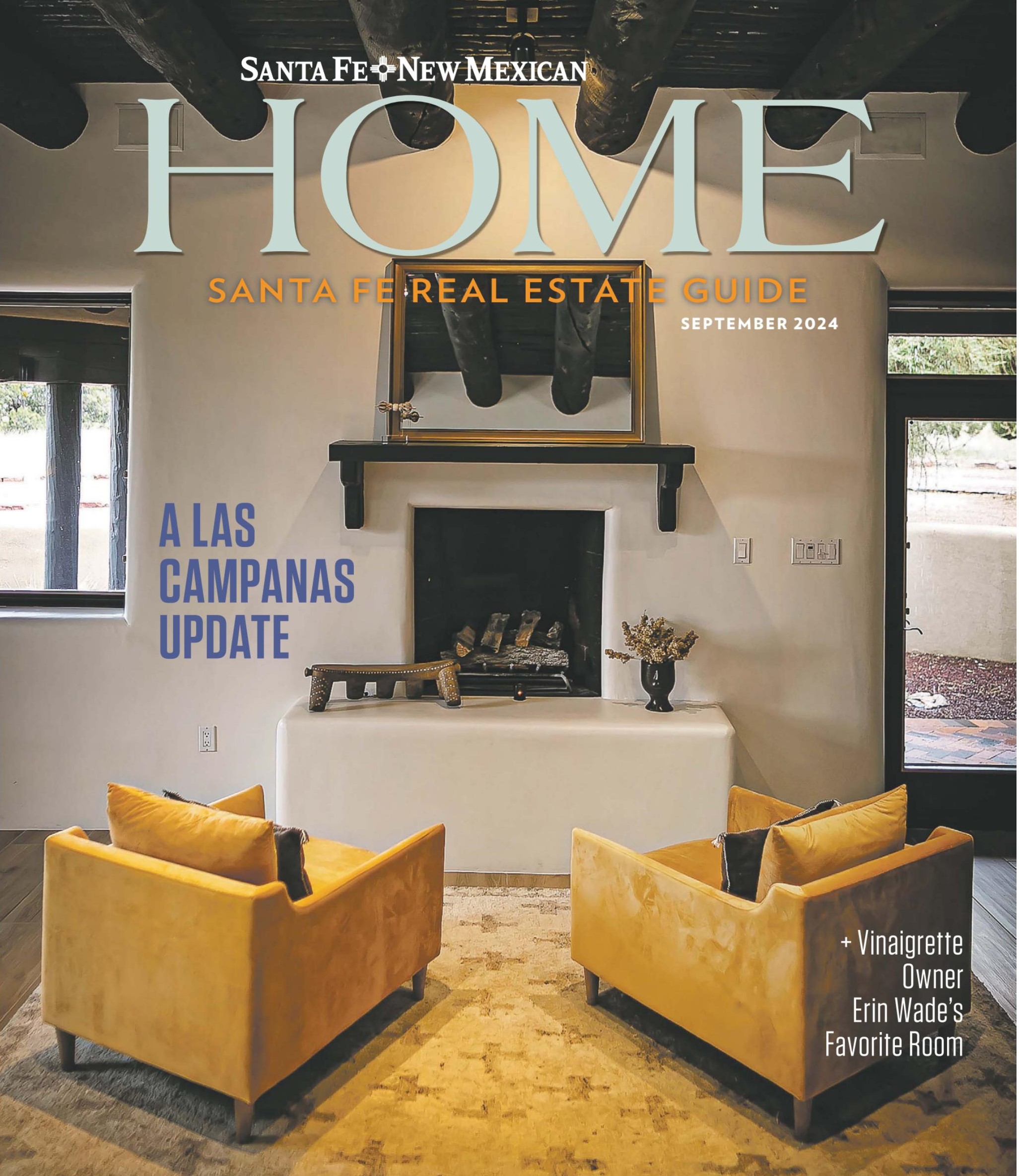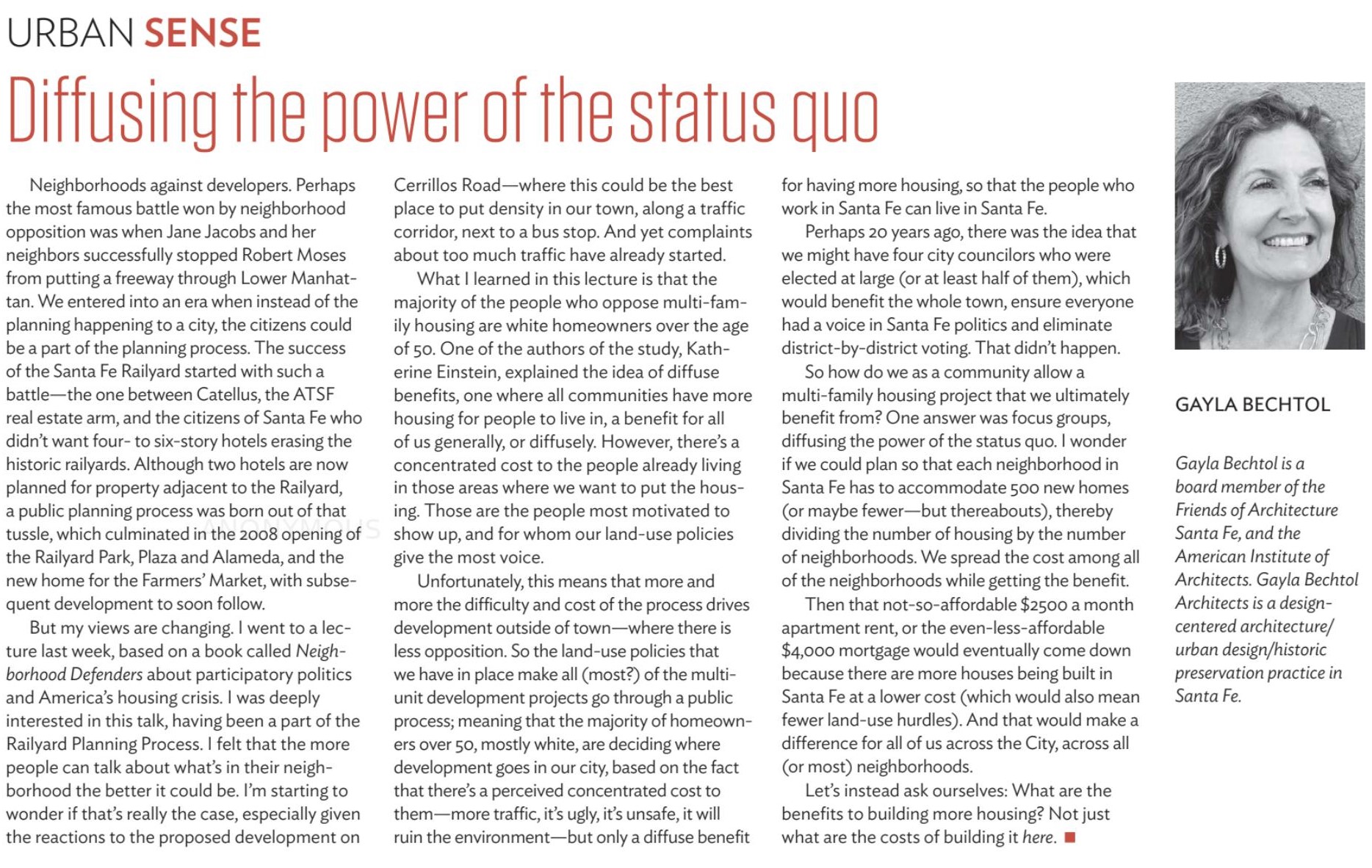In the September edition of The Santa Fe New Mexican’s Home Magazine, I discuss the historical and ongoing conflicts between neighborhood residents and developers, emphasizing how resident opposition, often from older, white homeowners, impacts urban planning and housing development. It suggests revising land-use policies and community engagement strategies to distribute housing more equitably, aiming to reduce costs and create a more inclusive urban environment. Urban Sense.
Read the Article:
Neighborhoods against developers. Perhaps the most famous battle won by neighborhood opposition was when Jane Jacobs and her neighbors successfully stopped Robert Moses from putting a freeway through Lower Manhattan. We entered into an era when instead of the planning happening to a city, the citizens could be a part of the planning process. The success of the Santa Fe Railyard started with such a battle—the one between Catellus, the ATSF real estate arm, and the citizens of Santa Fe who didn’t want four- to six-story hotels erasing the historic railyards. Although two hotels are now planned for property adjacent to the Railyard, a public planning process was born out of that tussle, which culminated in the 2008 opening of the Railyard Park, Plaza and Alameda, and the new home for the Farmers’ Market, with subsequent development to soon follow.
But my views are changing. I went to a lecture last week, based on a book called Neighborhood Defenders about participatory politics and America’s housing crisis. I was deeply interested in this talk, having been a part of the Railyard Planning Process. I felt that the more people can talk about what’s in their neighborhood the better it could be. I’m starting to wonder if that’s really the case, especially given the reactions to the proposed development on Cerrillos Road—where this could be the best place to put density in our town, along a traffic corridor, next to a bus stop. And yet complaints about too much traffic have already started.
What I learned in this lecture is that the majority of the people who oppose multi-family housing are white homeowners over the age of 50. One of the authors of the study, Katherine Einstein, explained the idea of diffuse benefits, one where all communities have more housing for people to live in, a benefit for all of us generally, or diffusely. However, there’s a concentrated cost to the people already living in those areas where we want to put the housing. Those are the people most motivated to show up, and for whom our land-use policies give the most voice.
Unfortunately, this means that more and more the difficulty and cost of the process drives development outside of town—where there is less opposition. So the land-use policies that we have in place make all (most?) of the multiunit development projects go through a public process; meaning that the majority of homeowners over 50, mostly white, are deciding where development goes in our city, based on the fact that there’s a perceived concentrated cost to them—more traffic, it’s ugly, it’s unsafe, it will ruin the environment—but only a diffuse benefit for having more housing, so that the people who work in Santa Fe can live in Santa Fe.
Perhaps 20 years ago, there was the idea that we might have four city councilors who were elected at large (or at least half of them), which would benefit the whole town, ensure everyone had a voice in Santa Fe politics and eliminate district-by-district voting. That didn’t happen.
So how do we as a community allow a multi-family housing project that we ultimately benefit from? One answer was focus groups, diffusing the power of the status quo. I wonder if we could plan so that each neighborhood in Santa Fe has to accommodate 500 new homes (or maybe fewer—but thereabouts), thereby dividing the number of housing by the number of neighborhoods. We spread the cost among all of the neighborhoods while getting the benefit.
Then that not-so-affordable $2500 a month apartment rent, or the even-less-affordable $4,000 mortgage would eventually come down because there are more houses being built in Santa Fe at a lower cost (which would also mean fewer land-use hurdles). And that would make a difference for all of us across the City, across all (or most) neighborhoods.
Let’s instead ask ourselves: What are the benefits to building more housing? Not just what are the costs of building it here.


